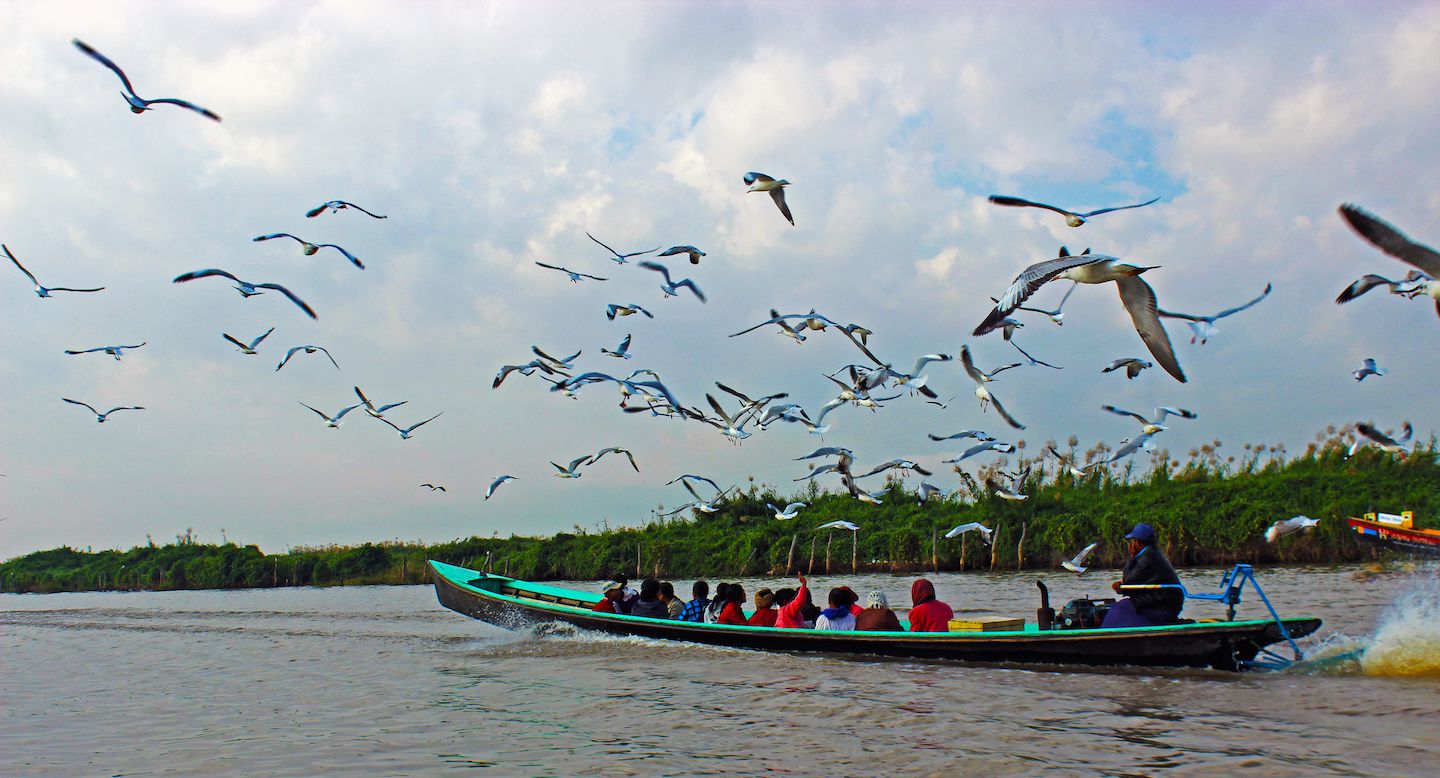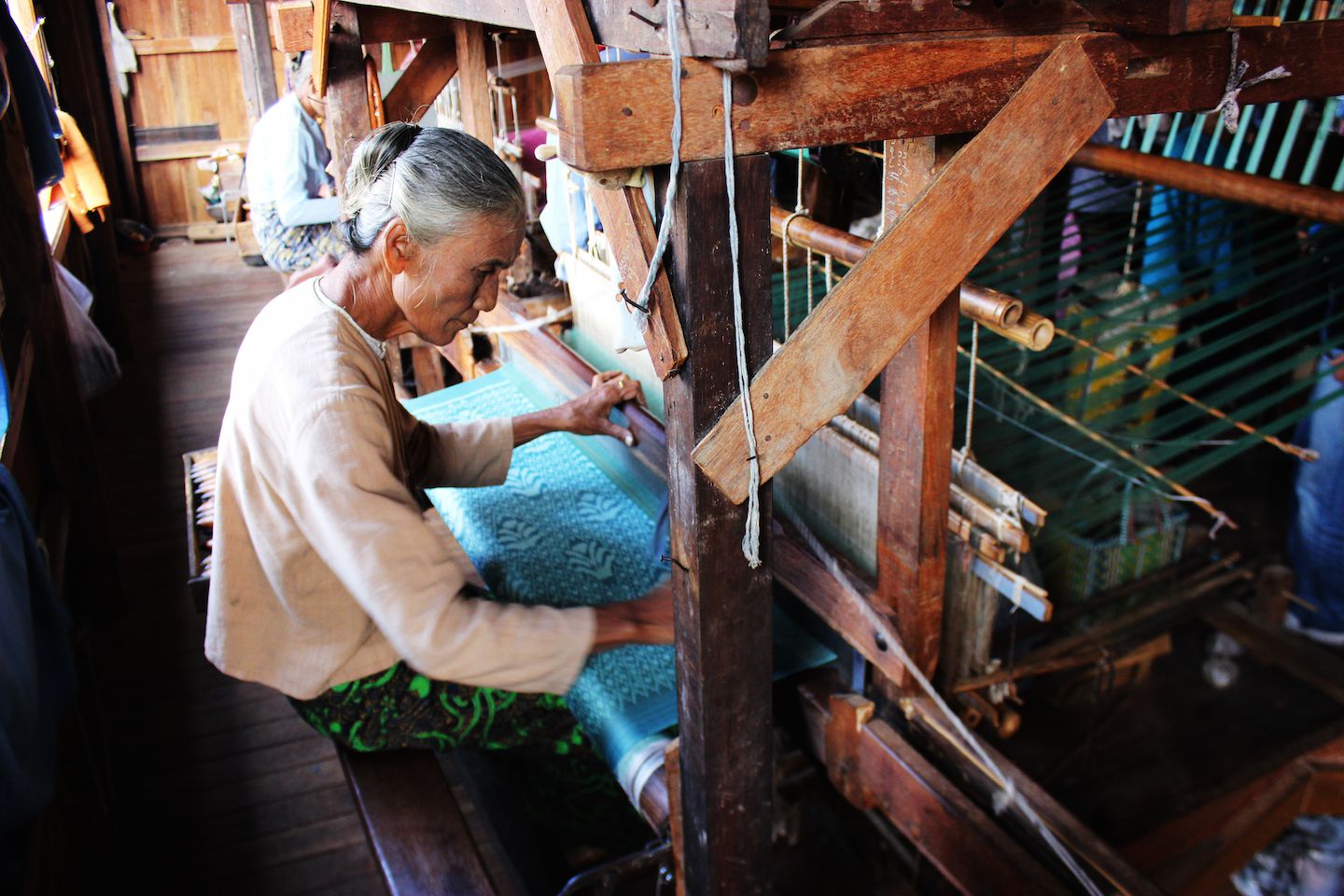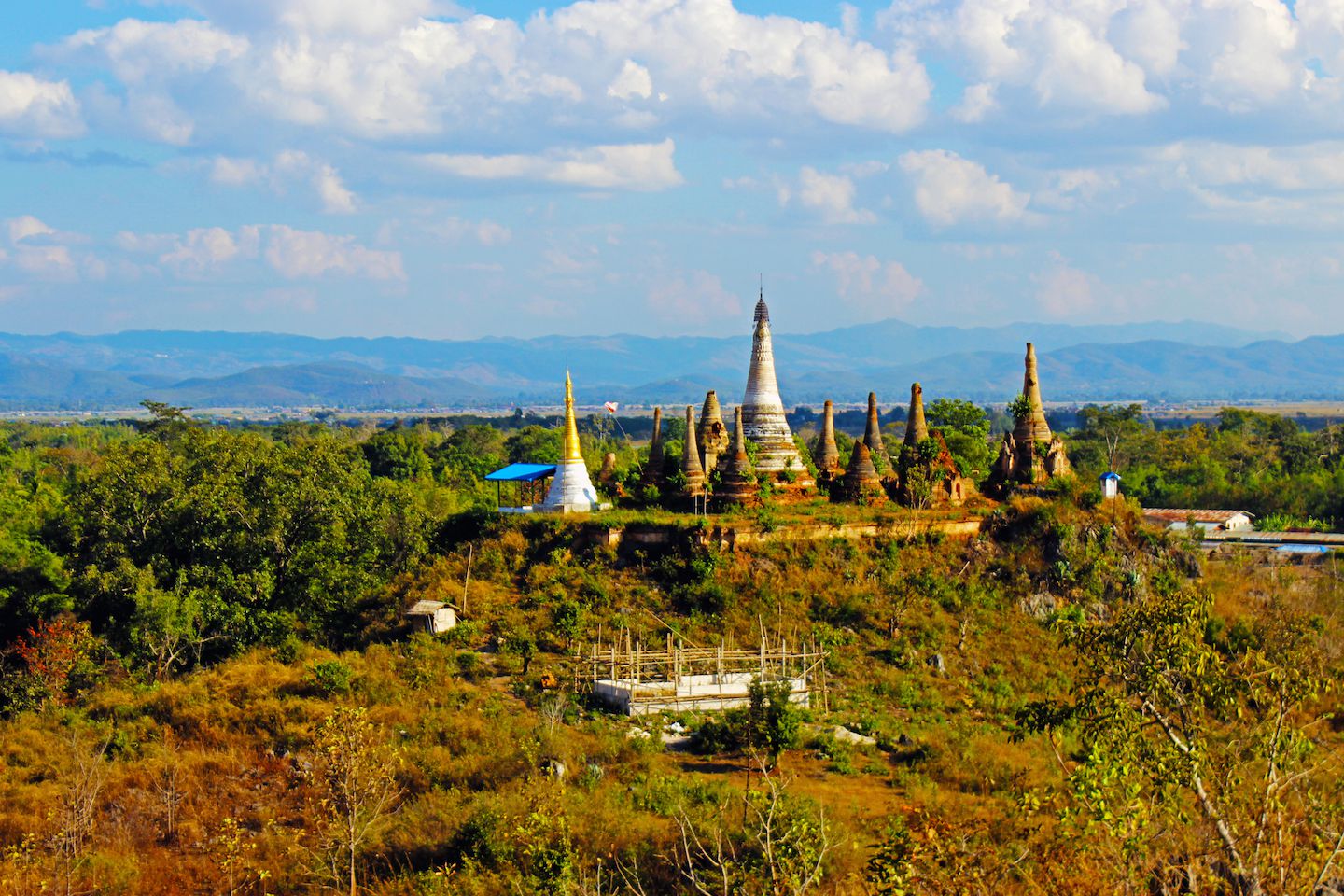One of the “Big Four” in Myanmar, we headed to Inle Lake directly after Golden Rock. We have read some truly disturbing stories of buses in Myanmar, but I’m happy to report that things have dramatically improved! Many new roads have been built recently which have made transportation between destinations faster and more comfortable. We’ve had much worse in Laos and it was much better than we expected, so no complaints. There was a $10 fee (per person per week) for entering the Inle Lake Zone for foreigners. We were not particularly happy about that, but a trip to Myanmar is not complete without a stop at Inle Lake.

We signed up for a full-day lake tour at a local agency in the Nyaung Shwe town close to Inle Lake. While a lake tour was a must-do, many people consider it a “tourist trap” due to the large number of crafts shops that tourists are taken to, all of them with souvenir shops. This was true – almost every stop had some options for purchasing. However, local craftsmanship was also on display and they were never pushy about buying items. Carlos and I are both very curious about how things work (not just because we’re engineers), so instead of resenting the tour for being a “tourist trap,” we saw this as an opportunity to observe masters at their handicraft as well as indirectly catch glimpses into local life. We knew we didn’t want to purchase anything, but there are other ways to appreciate someone’s work besides buying it.

The morning of, we met our boat driver and walked to the Nyaung Shwe pier together. He didn’t speak much English, as expected, but he was wonderful throughout the day. It was clear that he came prepared – there were two chairs on the long and narrow boat with cushions, blankets, and umbrellas. We set off along the long canal towards Inle Lake along with other boats. Out of nowhere, a group of birds joined us. Some locals in a boat beside us were throwing food into the air, which the gulls were more than happy to catch whilst flying above the boat. After one gull found it, hundreds came to join the feeding frenzy. I have never seen so many birds flying so low, all at the same speed as the boats – it was an incredibly cool sight. Unexpectedly great moments like this make all the hassle of travel worth it.

Once we reached the lake, we immediately saw the most famous people in the entire area. The local fishermen! The fishermen of Inle Lake caught fish like regular fishermen, but it was the way they rowed while catching fish that was so unique. While most people row with their hands and arms, the Inle Lake fishermen rowed with their legs. Pivoting the oar at the hip, they spun the oar using their leg, in a clockwise circular motion. This made a lot of sense given how shallow Inle Lake was. Rowing with their legs freed up the fishermen’s arms to catch fish using both string and bamboo nets.

Inle Lake was huge, with many people living in and around this large body of water. We spent the day visiting local craftsmen and places of interest in the Inle Lake community. Our first stop was a family of silversmiths. They created these cool slinky fish ornaments out of chained pieces of silver, which I had never seen before. What I found a little bit odd was that all of their supplies came from elsewhere – i.e. Mandalay or northern states. If the supplies are there, why aren’t the silversmiths there as well?

Our next stop was to see long-necked women of the Kayan people. We had both heard of these women before who wear neck rings made out of brass coils as young as age two, but we had never seen them in person. They look just like the pictures. While the thought of metal elongating someone’s neck makes me cringe a bit, the women seemed very comfortable. The neck rings did not seem to bother or hinder them in any way.

Right by the long-necked women was an umbrella shop. We popped in briefly and saw a rudimentary version of a lathe machine setup that the craftsman used to manually split and carve the wood into the rod and frame of the umbrella.

The rest of the umbrella was assembled using strings tying a web connecting the frame that was then paper macheed together to form the canopy. Pretty hand-painted patterns added the finishing touch. We continued to see these artistic umbrellas throughout the rest of our time in Myanmar.

We were lucky to catch a local market day – there were so many boats parked by the pier! This one seemed authentic, as there were more locals than tourists, though the entrance to the market was certainly targeted towards foreigners with souvenir stalls.

Beyond that was the actual market. We walked through hundreds of lively stalls selling everything absolutely everything. There was even a boar roaming around by the river. We also saw some locals play a smaller version of pool by flicking small discs on a smooth table. It must be quite the event for a local family to go to the market each week – many people trek miles from the nearby villages.

We expected to visit some weaving shop during the tour, but this one was different. There was still the usual loom where each thread in the criss-cross pattern was matched by hand. However, the threads here were made out of lotus. I had no idea you could make threads out of lotus! One woman’s job was to solely break lotus roots into pieces and pull out fibers in the process. The fibers were then rolled together to form a thread, which were then dyed and used in looms. It seemed like a lot of work to make one scarf or one shirt. As usual, it was amazing to see these women coordinate their hands and feet with so many threads to create beautiful patterns.

One of Carlos’ favourite stops during the day was the blacksmiths. At the time of our visit, they were forging a blade for a sword. Compared to the blacksmithing I’m used to seeing back home, these men had no protection at all. They were wearing flipflops and cotton longyis. The blacksmith holding the metal being forged was so close to the swinging hammers that I was afraid for him. There was zero safety equipment. A man in the back manually aired the fire. It was all very primitive. Having said that, we could see that the blacksmiths were very skilled and all of their good work was on display.

Inle Lake was also famous for its sweet-flavored cigarettes or cheroots which we saw during our stop at the tobacco shop. There, several young ladies prepared the cigarettes. The only tobacco in the cigarettes came from the leaf, and rolled inside it was a blend of dried banana and pineapple with star anise, brown sugar, tamarind, honey and rice wine. To finish, the rolled leaves had their tips cut off, received a brand seal and were packed, ready for sale. Neither Carlos nor I smoke, so we didn’t try them, but they were very popular with locals.

The last stop of the day was Inn Dein Pagoda… or it would have been if we were able to find it. Our boat driver dropped us off at the nearby village and pointed in one direction. We followed the only road until it split in a bifurcation and we followed the sign that said Inn Dein Monastery. It led to a small hill with some ruins on top, but we didn’t feel like we were at the right place, as we could see a higher hill. After walking around and asking a few people without any luck, we finally found the way up the higher hill we saw, only to be let down since it was a monastery and the view wasn’t that great either. In the end, we went back to the boat without actually seeing the pagoda and quite disappointed, especially because we paid extra just for it. I only hope that other tourists can find the right way.

All in all, we enjoyed our day touring the lake. At first I wondered why so many people gathered around Inle Lake to live in huts perched on top of the water, when there was so much land elsewhere in Myanmar to settle down.

After the day tour, I now understand. The lake not only provided a source of water, the entire area was extremely fertile year-long given the shallow depth of the lake at maybe only a meter or two. It was really interesting to see how people have built a whole community here, just like cities and towns everywhere around the world. Sure, they took boats instead of cars, and their gardens were floating, but we all create and build around the same needs and wants. We are all more alike than we’d like to think.

For more pictures from Inle Lake, please visit the gallery!

